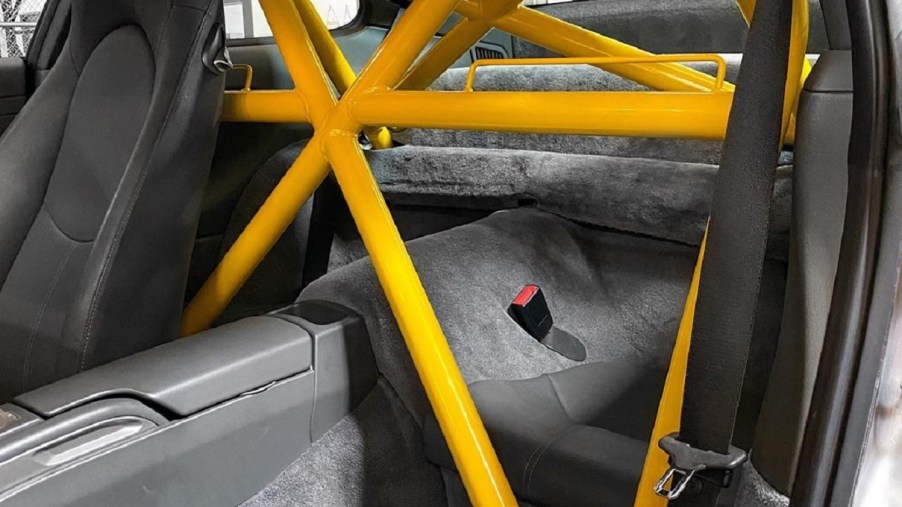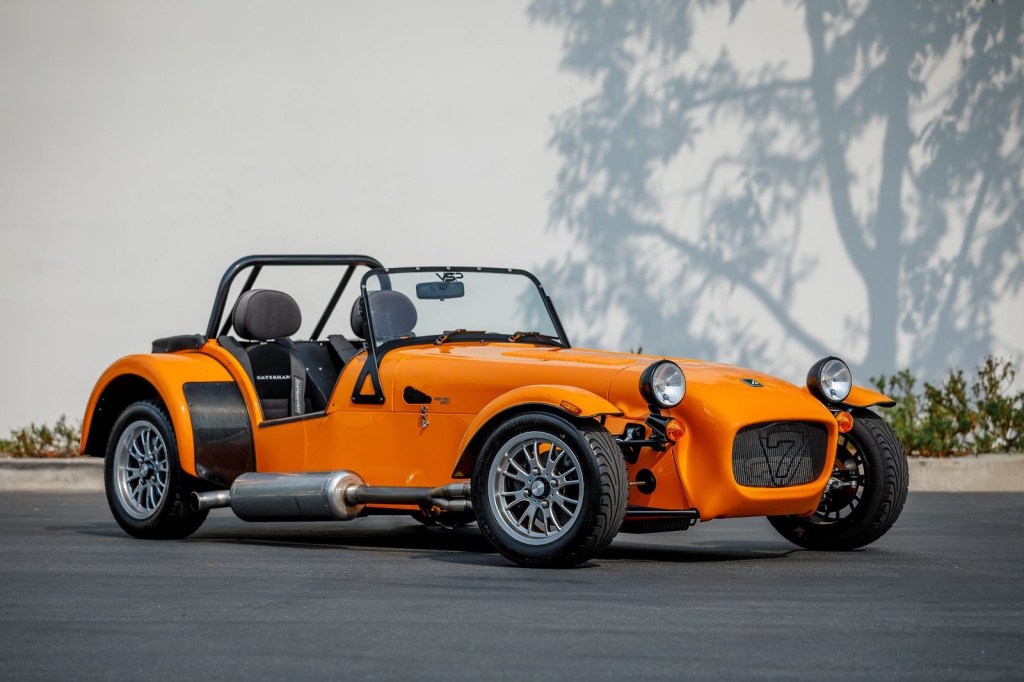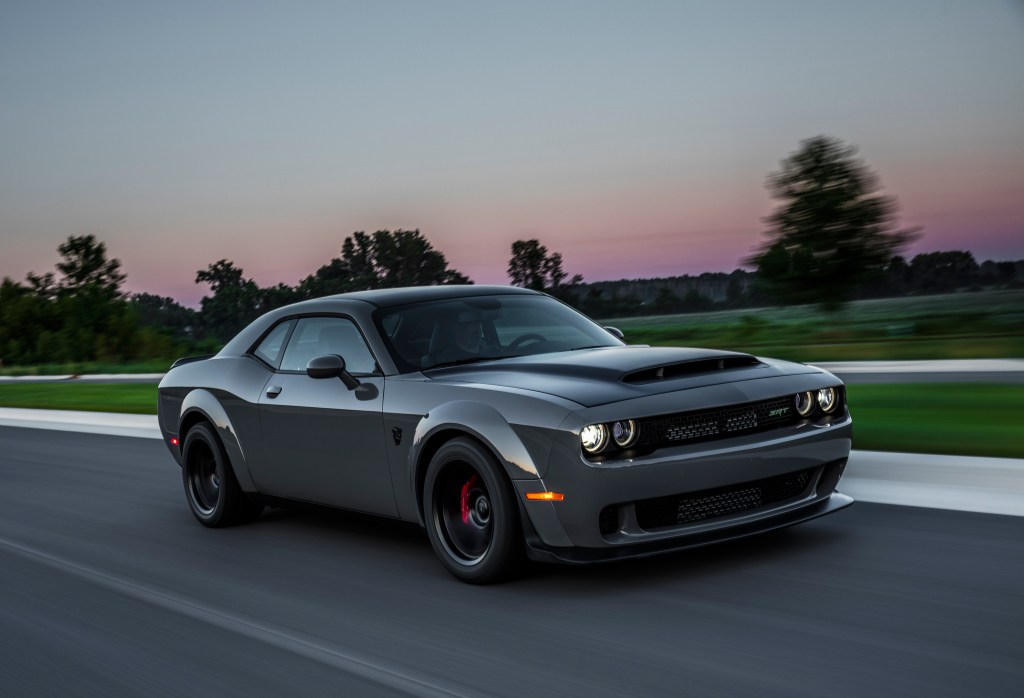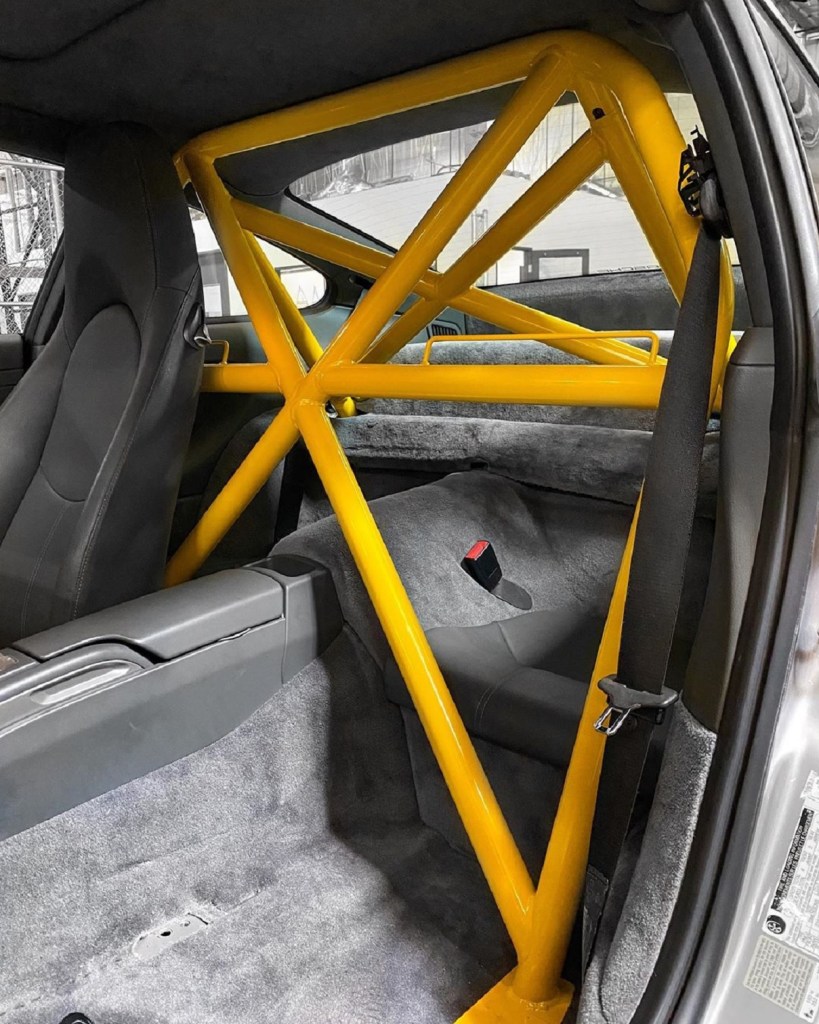
Roll Cages Aren’t Just for Race Cars
The most extreme race cars, whether they race in Baja or on the track, typically only resemble street cars superficially. But many racing modifications, from sway bars to grippier tires, can also make road cars perform better. And that includes the ones not meant purely for performance. As speed increases, so does the need for crash safety. And when race cars need safety, they turn to roll cages.
What do roll cages do?

Typically, road-going cars rely on airbags and crash structures to protect their passengers. But these systems add weight and take up room, which is why classic cars are lighter and often roomier than their modern counterparts. And as Caterham demonstrates, weight is the enemy of performance. Plus, most safety regulations don’t apply to race cars. Which is why they lack interior trim and airbags.
However, whether you’re in a drag racer or a kartcross kart, accidents can happen. So, not only do race cars get racing harnesses instead of seat belts, they get roll cages, SpeedHunters explains. Typically made of steel tubing, Popular Mechanics reports, they’re designed to absorb impacts and strengthen a car’s cabin. Especially in the case of a roll-over, FourWheeler and Red Bull explain; hence the ‘roll’ in ‘roll cage.’
Even if the race car ends up on its roof, Road & Track explains, a good roll cage keeps it from collapsing. Racers can end up bruised and scratched, but they’ll still be alive. In addition, as with sway bars and strut-tower braces, the cage makes the chassis stiffer, reducing flex, DSport Mag explains. So not only is the race car safer, but it also handles better.
Can you install a roll cage in a street car?

Roll cages are required for most professional racing series, and often for amateur ones, too. That’s why the Dodge Demon was banned from drag-racing, as a matter of fact. The car was so fast, the regulations required it to be fitted with a cage to legally compete. But it’s definitely possible to fit one to a road car, too.

Roll cages come in a few different types, DragZine explains, which differ based on the number of chassis attachment points. The simplest is a 4-point cage, which is basically 2 rear struts, a main hoop behind the driver, and a cross-brace. This kind of cage is often just called a roll bar, Jegs explains, but it’s still technically a cage. That’s because of the rear struts, which create a strong triangular shape.
Many professional race cars, though use at least an 8-point cage, The Mechanic Doctor reports. It’s possible, though, to find roll cages with as many as 14 attachment points.
However, before you install a roll cage in your Miata or 86, there are a few things worth keeping in mind.
Should you?
Firstly, for maximum efficacy, a roll cage should really be welded to your car’s chassis. It’s not strictly necessary, and in fact, many simply bolt the cage in place. But that often requires drilling holes into the chassis, and removing interior trim.
Secondly, while more points mean more rigidity and strength, it also means less interior space. As the above picture shows, a 6-point roll cage’s overhead bars cut into headroom and obstruct the door opening. If you’re going for something beyond a 4-point cage, your car starts being less usable on the street, and better-suited to racing.
Finally, roll cages aren’t exactly cheap. It is possible to weld the cage yourself, but that’s time-consuming, and not exactly a beginner-friendly process. A professionally-installed 4-point roll cage can easily cost $2500-$4000, Nasa Rally Sport reports. And you can’t install it piece-meal: you either install the entire cage at once, or you don’t bother.
Follow more updates from MotorBiscuit on our Facebook page.


